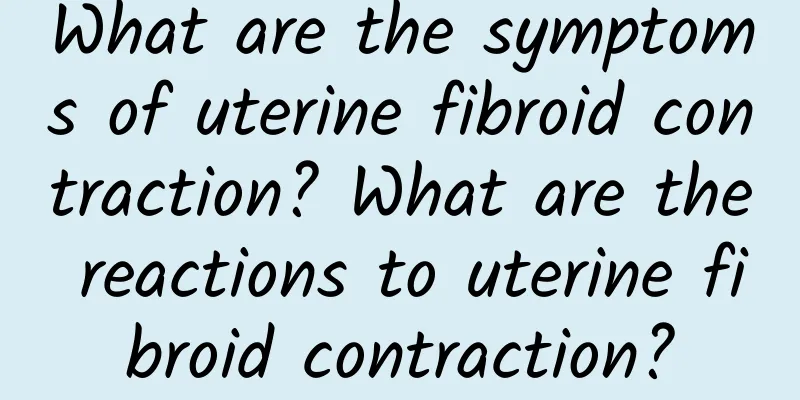How to diagnose miscarriage?

|
Miscarriage should not be considered a disease, but many women still experience miscarriage, and some have habitual miscarriages, which cause great harm to the body and are very distressing. So today we will learn about the diagnostic methods for miscarriage. Diagnosis of miscarriage: 1. Ask about the medical history in detail: whether there is a history of amenorrhea, whether there is vaginal bleeding, the amount and nature of the bleeding, whether there is abdominal pain and other discharge, etc. 1) The amount of uterine bleeding during abortion is generally more than that of ectopic pregnancy; it is also different from other abnormal pregnancies. Ectopic pregnancy is mostly vaginal bleeding; the bleeding of hydatidiform mole is often dark red, and it can also bleed repeatedly, or even cause a lot of vaginal bleeding. If carefully examined, sometimes blister-like tissue can be found in the blood. Dysfunctional uterine bleeding often occurs at both ends of the reproductive age. Those who occur over 40 years old often have a history of amenorrhea. Although there is a lot of vaginal bleeding, there is usually no abdominal pain, and there are rarely other discharges. All these situations are not difficult to distinguish, combined with the history of pregnancy and childbirth and the presence or absence of contraceptive measures. If there is any doubt, diagnostic curettage can be performed, and pathological examination can usually confirm the diagnosis; it is also conducive to treatment. Many cases of abortion are indeed misdiagnosed as functional uterine bleeding. Patients with uterine fibroids have no obvious history of amenorrhea but have a history of menorrhagia and infertility. If the uterus is large and the myonuclei can be touched, the diagnosis will be clearer. 2) Time from bleeding to the last menstrual period: that is, the time from the last menstrual period to the start of vaginal bleeding. It is often shorter in ectopic pregnancy and longer in miscarriage and hydatidiform mole. 3) Abdominal pain: Abdominal pain in abortion and hydatidiform mole is generally mild and paroxysmal, mostly in the center of the lower abdomen. Ectopic pregnancy is severe pain in the lower abdomen on one side, which may affect the whole abdomen and gradually ease after 1 to 2 days. There is usually no lower abdominal pain in functional uterine bleeding. Uterine fibroids may cause a feeling of heaviness in the pelvis or mild pain. |
<<: Beware of the dangers of miscarriage
>>: Study on analgesia technique for artificial abortion
Recommend
How much does intrauterine adhesion surgery cost?
Experts say that the cost of treating intrauterin...
Too lazy to date because it’s cold? Yoga for couples helps you lose weight and increase your interest
It’s so cold in winter, so cold that I don’t want...
Abnormal dysmenorrhea, a signal light for gynecological diseases
Dysmenorrhea is a common gynecological disease. G...
Experts explain how to treat chronic adnexitis
With the development of society, more and more fe...
How to avoid premature ovarian failure
How to avoid premature ovarian failure? With the ...
Is cervical erosion hereditary?
Can cervical erosion be inherited? Cervical erosi...
Experts explain the harm of uterine fibroids to women
"What are the harms of uterine fibroids to w...
Does eating coix seed help women with cervical erosion? Analysis of whether coix seed can cure cervical erosion
Cervical erosion is a very common gynecological d...
Three principles for the treatment of vaginitis
Three principles for the treatment of vaginitis: ...
Is fat evil? The answer is very different from what you think! Decoding white fat vs. brown fat
Is fat all evil? The answer may be very different...
Is it serious to have uterine polyps? The consequences of delaying treatment are very serious.
The uterus is where women give birth to babies. T...
How is endometrial tuberculosis spread?
What are the transmission methods of endometrial ...
How is adnexitis generally treated clinically?
What are the treatments for adnexitis? Adnexitis ...
Why do girls get pelvic peritonitis?
Pelvic peritonitis is a common disease among wome...
Causes of hyperprolactinemia in women
What are the causes of hyperprolactinemia in wome...









